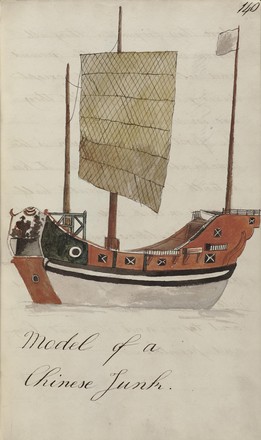"The Naturalists Companion" was written and illustrated by
Digby, probably in the mid-1810s, before he left Dublin for England and
Cambridge University. His text, which describes animals and objects he encountered
in a number of museums in Dublin, is illustrated with 440 separate
watercolours. The text describes the collections in the museums of Trinity
College (described between pages 115 and 243) and the Dublin Society and a
public menagerie exhibiting at the time. He also described specimens from his
own observation and other published sources.
The manuscript describes and illustrates a
variety of animals, fish, insects, natural and ethnographic productions and
antiquities from England, Ireland, India, Spain, Africa, China, America,
Australia, New Zealand and the Pacific. It includes a number of Australian
animals, such as the kangaroo, and illustrations of Pacific artifacts collected
on Captain James Cooks second and third voyages held by the Dublin Society and
the Trinity College Museum.
It seems that Digby composed the text himself although much of its
content is drawn from published authorities. He cites numerous standard
reference sources such as George Buffon's "Natural History". The
text, which concentrates mainly on animals (about 300 of the illustrations are
natural history) rather than ethnographic or antiquarian specimens, is largely
anecdotal. He is not interested in the anatomy or physiology of the animals he
describes, and nor does he attempt to position them within a classification
scheme. He uses popular rather than scientific names.
It is significant to note that living Australian
natural history specimens had reached Dublin by the early 1810s as part, it
appears, of a commercial menagerie.
The Pacific artifacts illustrated in "The
Naturalists Companion" were held in both the museums of Trinity College,
Dublin the Dublin Society. The artifacts were probably collected on Captain
James Cooks Second and Third Voyages. "The Dress of a Chief Mourner, from
Otaheite" (page 221), for instance, was collected on Cook's Second voyage
by surgeon James Patten, who settled in Dublin immediately after his return. He
gave his collections to Trinity College in 1777, which were later transferred
to the National Museum of Ireland. The dress itself was presented by the
National Museum to the Bishop Museum in Hawaii in 1971, and was exhibited in
the Bishop's 1978 exhibition "Artificial Curiosities. An exposition of
Native Manufactures" and is illustrated at fig. 211. Other material
probably came from Captain James King, of the Third Voyage's Resolution (see
J.D. Freeman, The Polynesian Collection of Trinity College, Dublin and the
National Museum of Ireland, "Journal of the Polynesian Society", vol.
58, 1948 p.1-18).
Other Pacific artifacts, such as "Sandwich
Island God" (page 3) and "A knife of the Sandwich Islands"
(p.213), were in the Museum of the Dublin Society, although how they came into
the possession of that Society is not known. It was transferred to the National
Museum of Ireland, along with much of the Society's collection in 1880. The
original was exhibited at the Bishop Museums (Honolulu) 1979 exhibition
"Eleven Gods Assembled", curated by Dr Adrienne Kaeppler.
"The Naturalists Companion" is an apparently random compendium
of natural history, ethnographic and antiquarian specimens. Its lack of obvious
taxonomy indeed its unusual juxtapositions (page 5, for example, depicts a Non
Pareil Parrot, a Pied Butcherbird and a Hooka Pipe) illustrates a then common
approach to the description of the natural world: an encyclopedic record
without an obvious system or organising principal. "The Naturalists
Companion" reflects the often haphazard composition of late eighteenth
century and early nineteenth century European museums. Comparisons with
published catalogues from such museums, such as the Leverian Museum or William
Bullocks Museum shows how close Digby's manuscript was in conception to
contemporary museums -- see for example William Bullock, "A Companion to
the London Museum and Pantherion", 1813 (Mitchell Library call no. 507/B)
or King & Lochee, "Catalogue of the Leverian Museum", 1806
(Mitchell Library call no. 570.7/L).



 Back to list
Back to list